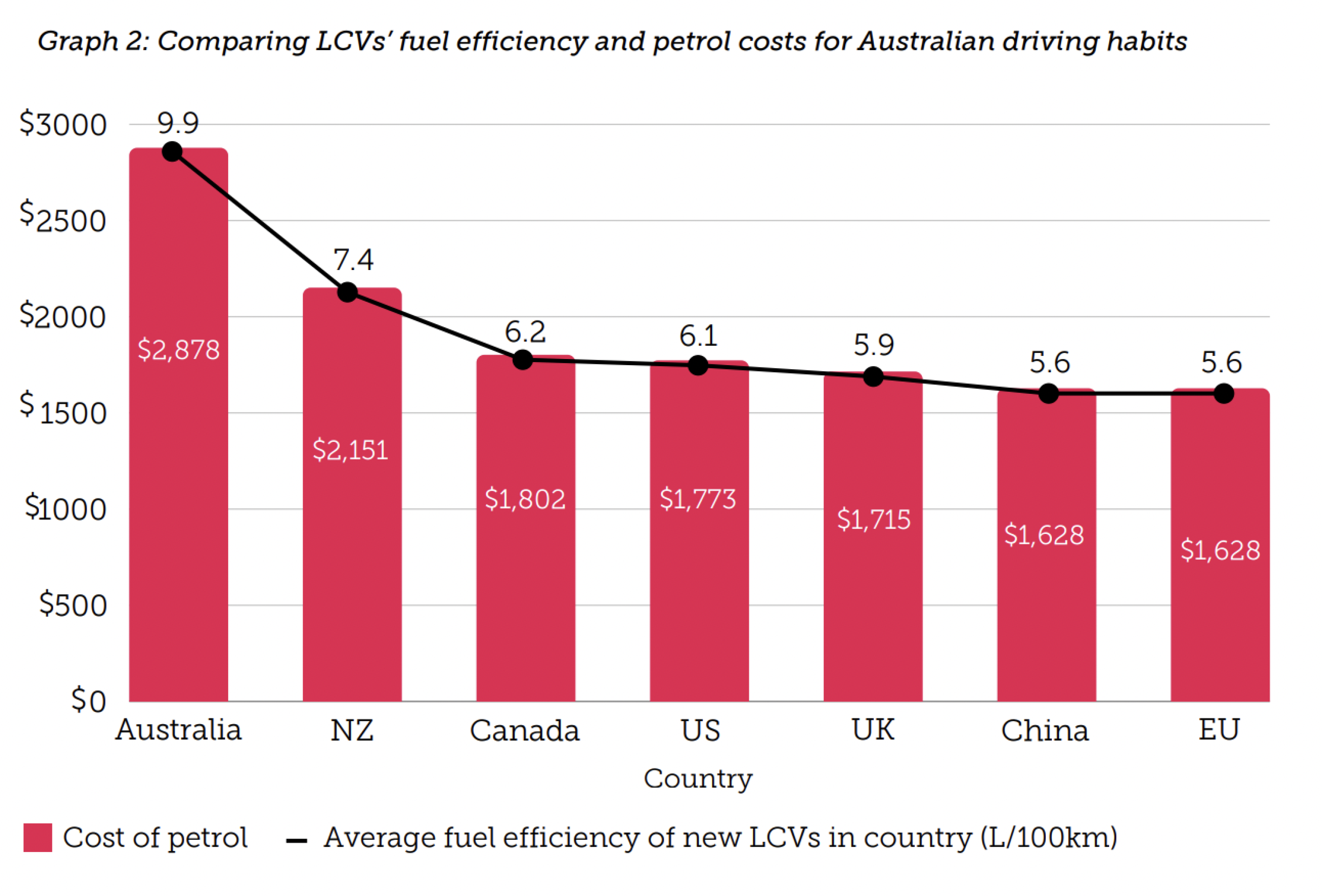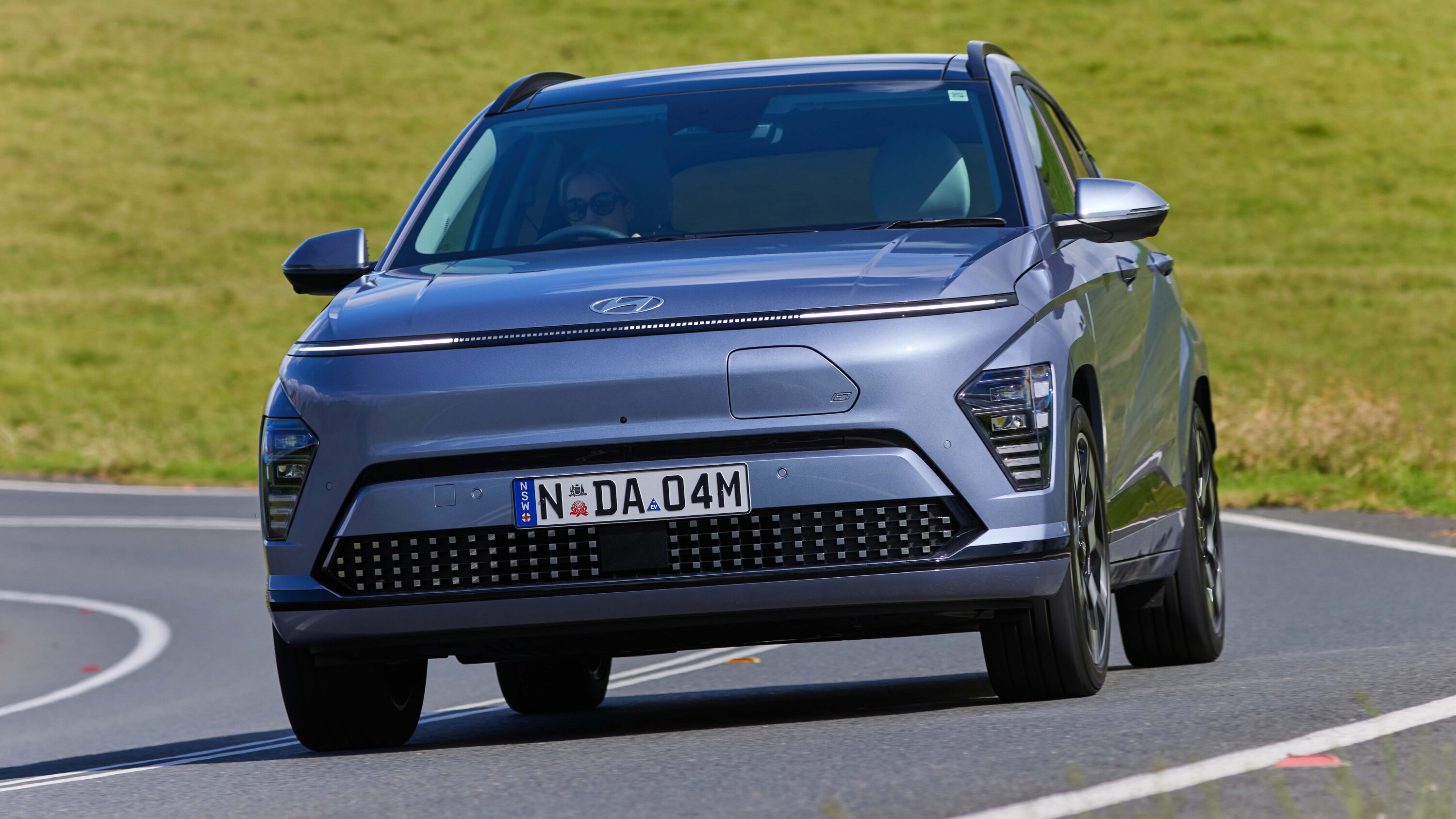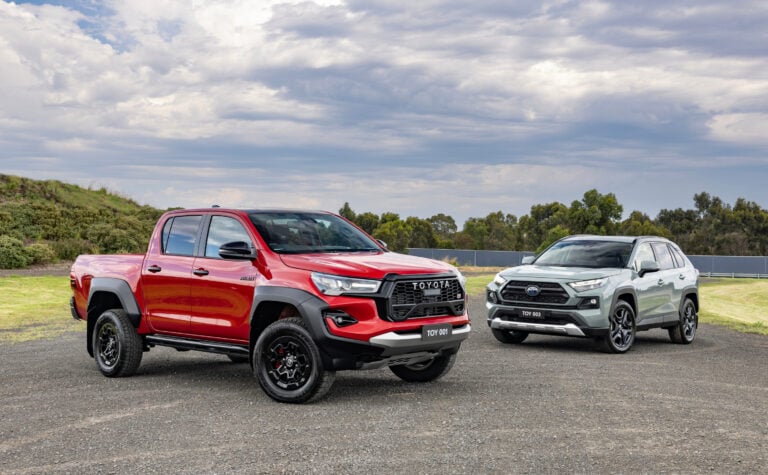
The federal government showed three possibilities for its New Vehicle Efficiency Standard (NVES) and is taking final feedback ahead of announcing its strategy.
One of the benefits claimed is savings on fuel, with more efficient vehicles proposed to save an average of $5710 over five years and $17,000 over the life of a vehicle, according to the government which has yet to release its modelling.
The Climate Council [↗] has investigated the potential of more fuel-efficient cars in Australia and found that buyers could save big on fuel bills, but perhaps not quite as much as the government is promising.
What is the Climate Council?
The Climate Council is an independent organisation that advocates for lower emissions. It wants to see emissions drop quickly from 2025, with a 74 per cent reduction by 2030 and net zero by 2035.
For new passenger cars, the average consumption in Australia is 6.9L/100km which compares rather unfavourably to Europe’s 3.5L/100km fleet average.
In the government’s preferred middle ground, new car sales here will be at that figure by 2027 and is better than the softest standard’s final goal of 99g CO2/km.
The Climate Council notes Aussies could save $720 per year if we match Europe’s fleet average while catching up with the US saves a still-significant $520 annually on fuel.
The modelling promises even bigger savings for light commercial vehicles, with the Climate Council calculations showing a $1105 saving for matching the US fleet (6.1L/100km) and $1250 for equalling the EU (5.6L/100km).

In Australia where dual-cab utes are popular and necessary for more tasks, it may prove tricky to match Europe’s low emissions from our current 9.9L/100km.
The Climate Council sites the Isuzu D-Max as an example, as the ute only sold in the UK and Europe with an ‘RZ4E’ 1.9-litre engine that achieves 6.7L/100km.
This is a skewed comparison as to get the 3500kg towing capacity Australians demand, buyers need to opt for the 3.0-litre ‘4JJ3-TCX’ mill that consumes 8L/100km, emits 207g CO2/km and makes up the lion’s share of Aussie sales.
Still, it’s damning that Australia remains so far behind the United States considering that market’s best-selling vehicle is the Ford F-150 full-size pick-up.

Will the NVES affect new car prices?
We won’t know until the government releases its strategy and charges but the Federal Chamber of Automobile Industries (FCAI) says any tax attracted by polluting vehicles is likely to be passed onto the customer by OEMs.
The FCAI warns that penalising emissions will therefore increase the price of vehicles that are popular today, such as utes and petrol family-sized SUVs.
However, the Climate Council denies this quite fiercely and notes that vehicle emissions standards have been in place the world over for years. In a global sense, then, manufacturers are well-versed in making more efficient vehicles including 4x4s and commercial vehicles.
What is the FCAI?
The FCAI represents companies that distribute new vehicles and motorcycles in Australia.

What may suffer, at least initially, is the lag between standards being put in place and the reaction from manufacturers.
Brands with ranges concentrated on utes and SUVs or without significant hybrid offerings, such as Isuzu and Subaru, may struggle to meet targets initially.
Some, such as Volvo, have already made their promises while Volkswagen (also in a good position) will focus mostly on EVs and existing powertrains, choosing not to offer efficient new-gen plug-in hybrid and three-cylinder powertrains in its Golf small car range locally.
We recommend
-
 News
NewsUnpacking Australia’s New Vehicle Efficiency Standard: What does it mean for you?
What options do we have for Australia's upcoming fuel efficiency standards?
-
 News
NewsWhat to expect from Australia’s New Vehicle Efficiency Standards in 2025
Australia likely to follow United States when it comes to fuel efficiency standards – expect legislation next year
-
 News
NewsVFACTS January 2024: Record-breaking start, but turbulent times predicted
Ford Ranger remains on top in a record-breaking January as new-car sales kick off for 2024, but tougher times are predicted in future months with demand expected to weaken




